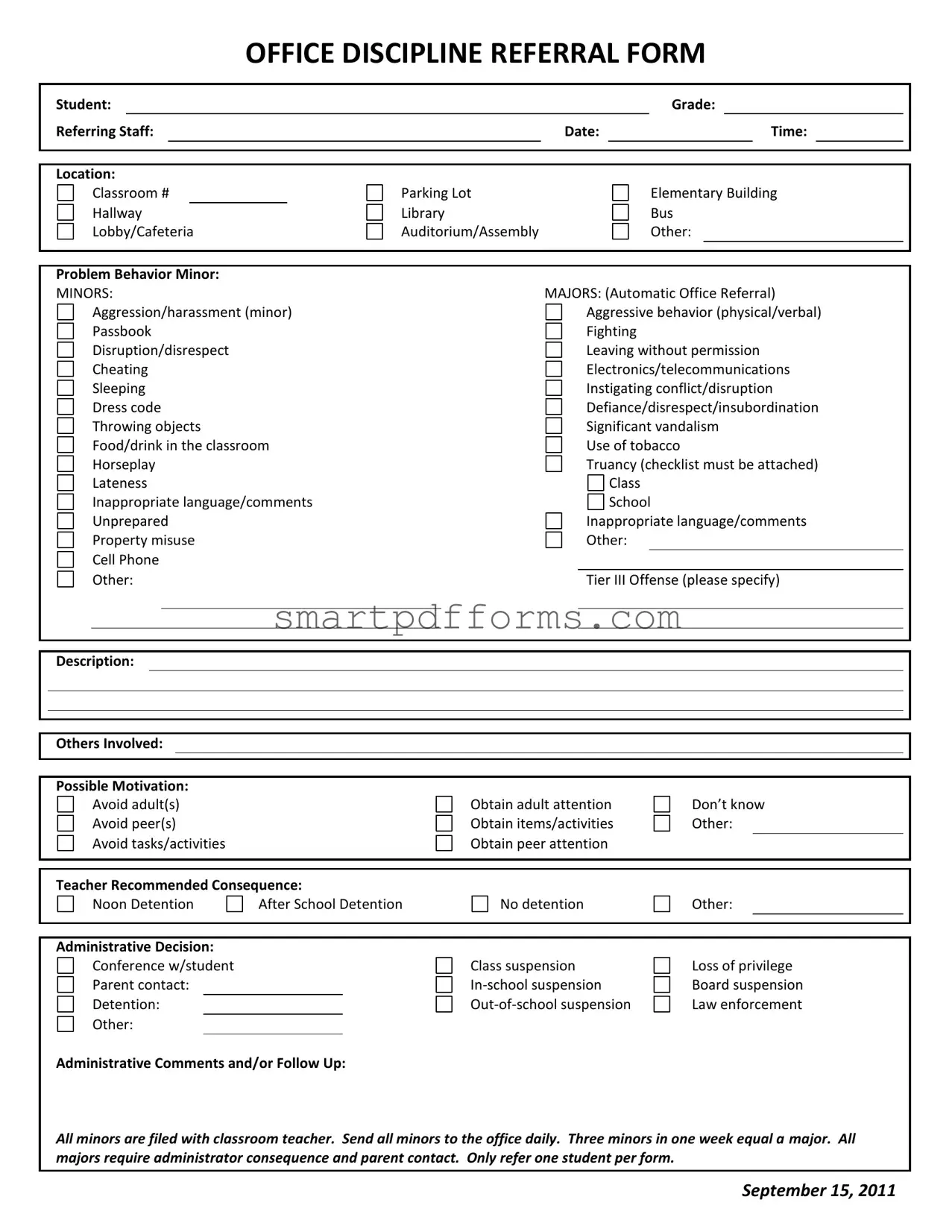In schools across the nation, the implementation of structured frameworks to manage student behavior is a testament to the ongoing commitment to creating safe and conducive learning environments. Central to these efforts is the Office Discipline Referral form, a document designed to standardize the recording and addressing of student behavioral issues within educational settings. This form captures essential information including the student's name, grade, the staff member making the referral, the date, time, and location of the incident, alongside a detailed description of the problem behavior. Behaviors are categorized into minor and major issues, with major ones necessitating automatic office referrals. The form outlines a range of behaviors from aggression, disruption, and defiance, to more specific actions like using electronics unauthorizedly or violating the dress code. Furthermore, it prompts the referring staff to consider the possible motivations behind the student's behavior, aiding in understanding the root cause rather than merely addressing the symptom. The form also allows for the suggestion of consequences and clearly outlines the administrative decisions available, ranging from detention to, in severe cases, law enforcement involvement. This document underscores the school's role not just in academic instruction but also in behavioral guidance, aiming to rectify issues in a manner that is constructive for the student's growth. By categorizing behaviors, specifying possible motivations, and suggesting appropriate consequences, the Office Discipline Referral form is a pivotal tool in the educational system's ongoing efforts to maintain harmony and ensure a positive learning atmosphere for all students.

